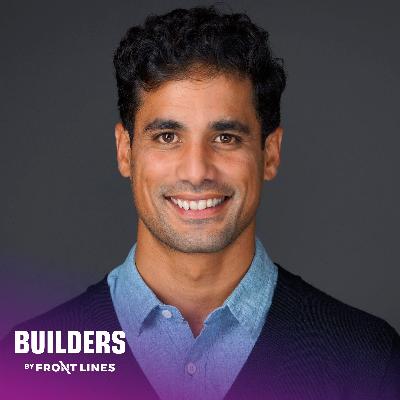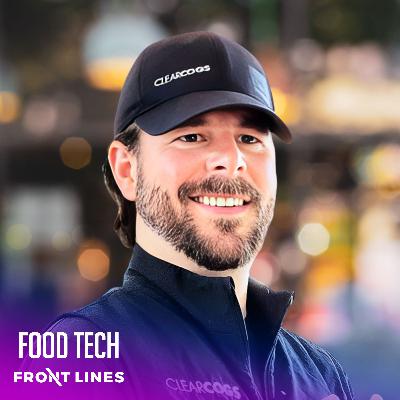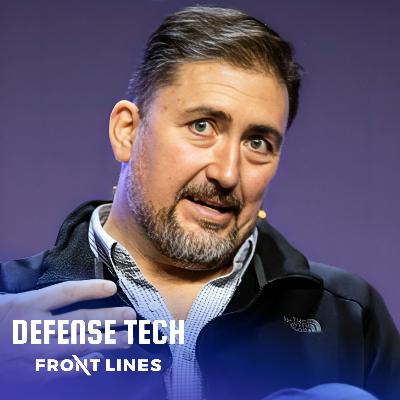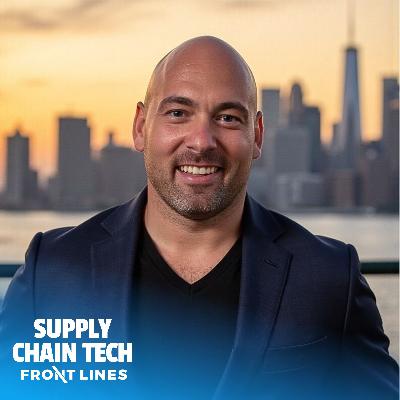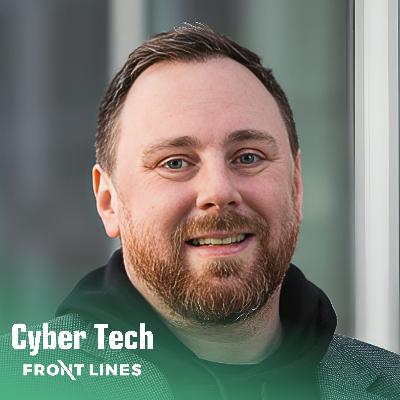How BlueRock identified three distinct buyer personas by asking "How would you describe what we do to your peers?" | Bob Tinker ($25M Raised)
Description
BlueRock is building an agentic security fabric to protect organizations deploying AI agents and MCP workflows. With a $25 Million Series A, founder Bob Tinker is tackling what he sees as a 10x larger opportunity than mobile's enterprise disruption. Bob previously scaled MobileIron from zero to $150 million in five years and took it public in 2014. In this episode of Category Visionaries, Bob shares the strategic mistakes that cost MobileIron its category positioning, why go-to-market fit is the missing framework between PMF and scale, and how B2B marketing has fundamentally transformed in just 18 months.
Topics Discussed:
- Taking a company public: the killer marketing event versus the unexpected team psychology challenges of daily stock volatility
- Why agentic AI workflows create unprecedented security challenges at the action and data layer, not just prompts
- The strategic timing of category definition: MobileIron's cautionary tale of letting Gartner define you as "MDM" when customers bought for security
- Where enterprise buyers actually get advice now that Gartner's influence has diminished
- AEO (Answer Engine Optimization) replacing SEO as the primary discovery mechanism for B2B solutions
- Why 1.0 categories have fundamentally unclear ICPs versus 2.0/3.0 products with crisp buyer personas
- The "high urgency, low friction" framework for prioritizing what to build in nascent markets
- Go-to-market fit: the repeatable growth recipe that unlocks scaling post-PMF
- Unlearning as competitive advantage for second-time founders
GTM Lessons For B2B Founders:
- Time your category noun definition strategically: MobileIron focused exclusively on solving the problem (the verb) but waited too long to influence category nomenclature. Gartner labeled it "Mobile Device Management" when customer purchase drivers were security-focused, not management. This misalignment constrained positioning for years with no way to correct it. The framework: lead with verb, but proactively shape the noun before external analysts do it for you. Bob's doing this differently at BlueRock by distinguishing "agentic action security" from "prompt security" early, even while the broader market sorts out AI security taxonomy.
- Use customer language as category discovery, not invention: Bob's breakthrough on BlueRock positioning came from asking prospects: "How would you describe what we do to your peers?" One prospect distinguished their focus on "the action side - taking AI and taking action on data and tools" versus prompt inspection and AI firewalls. This customer-generated framing revealed the natural fault lines in how practitioners think about the problem space. The tactical application: run this exact question with your first 10-15 qualified prospects and pattern-match their language, rather than workshopping category names internally.
- Engineer for the "high urgency, low friction" intersection: Bob's filtering criteria for BlueRock's roadmap requires both dimensions simultaneously. When a prospect revealed they were building their own MCP security tools - a signal of acute, unmet pain - they also asked BlueRock to add prompt security features. Bob's framework forced a "no" despite clear demand because it would violate low friction. The discipline: if a feature request fails either test (not urgent enough OR too much friction), it doesn't make the cut, even when prospects explicitly ask for it.
- Accept ICP ambiguity as a feature, not bug, of 1.0 markets: In 2.0/3.0 categories, you can target "VP of Detection & Response" with precision. In 1.0 markets like agentic security, Bob finds buyers across three distinct orgs: agentic development teams building secure-by-default systems, product security teams inside engineering (not under the CISO), and traditional security organizations. His thesis: this lack of crisp ICP definition is actually a reliable signal you're in a genuinely new market. The response: invest in community engagement across all three buyer types rather than forcing premature segmentation.
- Shift content strategy from SEO to AEO immediately: Bob identifies the clock speed of marketing change as "breathtaking" - what worked 18 months ago is obsolete. The specific shift: ranking above the fold in Google search is now irrelevant. What matters is appearing in the answer box that ChatGPT or Google Gemini surfaces above traditional results. This isn't incremental SEO optimization - it requires fundamentally restructuring content to feed LLM context windows and answer engines rather than keyword-optimizing for traditional search crawlers.
- Treat go-to-market fit as a distinct inflection point: Bob observed a consistent pattern across MobileIron, Box (Aaron Levie), Citrix (Mark Templeton), Palo Alto Networks (Mark McLaughlin), and SendGrid (Sameer Dholakia) - all hit PMF, hired salespeople aggressively, burned cash, and stalled growth while boards grew frustrated. The missing concept: PMF proves you can create value; GTM fit proves you can capture it repeatedly. It's the "repeatable growth recipe to find and win customers over and over again." The tactical implication: after PMF, resist pressure to scale headcount and instead obsess over making your first 3-5 sales cycles systematically repeatable before hiring your second AE.
- Build community as primary discovery in fragmented buyer markets: Bob's most different GTM motion versus five years ago: "We're just out talking to prospects and customers - individual reach outs, hitting people up on LinkedIn, posting in discussion boards, engaging with the community." This isn't supplemental to demand gen; it's replaced traditional top-of-funnel. When prospects exist across multiple personas without clear titles, community presence in Reddit, Stack Overflow, and LinkedIn becomes the only scalable discovery mechanism. The benchmark: successful new tech companies have built communities of early users before they've built repeatable sales motions.
- Practice systematic unlearning as second-time founder discipline: Bob's most personal insight: "What really got in my way wasn't what I needed to learn. It was what I needed to unlearn." The specific application: he's questioning his entire MobileIron marketing playbook because "blindly applying that eight-year-old playbook to marketing or sales will end in tears." His framework: periodic gut checks asking "What assumptions am I making? How should I think about this differently?" rather than letting inertia drive execution. The meta-lesson: success creates muscle memory that becomes liability without deliberate examination. Second-time founders should actively audit which reflexes to preserve versus discard.
//
Sponsors:
Front Lines — We help B2B tech companies launch, manage, and grow podcasts that drive demand, awareness, and thought leadership. www.FrontLines.io
The Global Talent Co. — We help tech startups find, vet, hire, pay, and retain amazing marketing talent that costs 50-70% less than the US & Europe. www.GlobalTalent.co
//
Don't Miss: New Podcast Series — How I Hire
Senior GTM leaders share the tactical hiring frameworks they use to build winning revenue teams. Hosted by Andy Mowat, who scaled 4 unicorns from $10M to $100M+ ARR and launched Whispered to help executives find their next role.
Subscribe here: https://open.spotify.com/show/53yCHlPfLSMFimtv0riPyM






